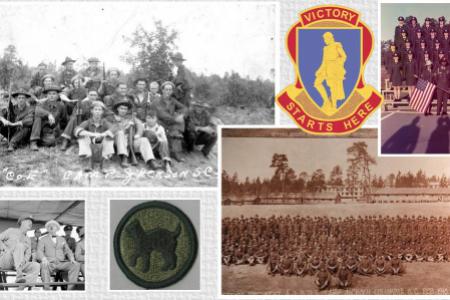
History
- World War I
- Between the Wars
- World War II
- Korean War Era
- Vietnam War Era
- End of the 20th Century
- 21st Century
World War I
The need for suitable training sites with comfortable climate (for tent living as opposed to barracks) and varied terrain meant that South Carolina became home to multiple training camps, several of which remain defense facilities today, including Fort Jackson.
South Carolinians opened their homes, pantries and heart to visiting soldiers—supporting training efforts with good ole southern hospitality and plenty of willing labor to build facilities. Our state delivered more than its share of fighters too. On a per capita basis, support for WWI from South Carolinians was among highest in nation, and of the 79 Medals of Honor awarded in WWI, 7 went to South Carolinians.
In 1916 Columbia civic leaders proposed the site of Fort Jackson to the Army and legendary Generals Douglas MacArthur and Leonard Wood surveyed and approved the site.
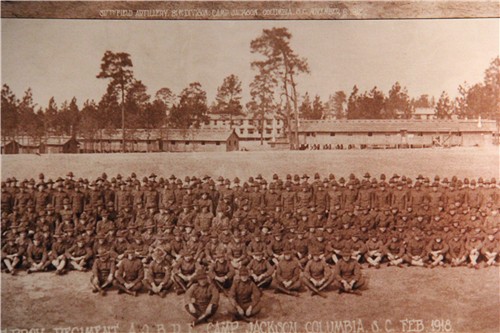
Enthusiastically, the Columbia Chamber of Commerce raised funds to purchase land, and local residents donated or leased thousands of acres to augment the government’s purchase.
 In June 1917, construction of the Sixth National Cantonment began. The War Department awarded the construction contract to Hardaway Contracting Company of Columbus, Georgia. The land chosen for Camp Jackson had no roads or trails, and in some places, the underbrush was so thickly overgrown that a man on horseback could not proceed. However, within nine weeks the first of thousands of draftees were scheduled to arrive for training.
In June 1917, construction of the Sixth National Cantonment began. The War Department awarded the construction contract to Hardaway Contracting Company of Columbus, Georgia. The land chosen for Camp Jackson had no roads or trails, and in some places, the underbrush was so thickly overgrown that a man on horseback could not proceed. However, within nine weeks the first of thousands of draftees were scheduled to arrive for training.
On July 18, the War Department issued General Order Number 95, re-designating the cantonment as Camp Jackson in honor of President Andrew Jackson, a South Carolina native.
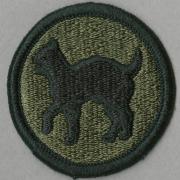
In August, the 81st Division, the first operational unit on the installation, arrived. While at Camp Jackson, the 81st Division fashioned hand-made patches showing a wildcat (because their unit area was near Wildcat Creek on the installation) and attached them to their uniforms. General Pershing liked the idea and ordered all Army units to adopt shoulder sleeve insignia.
The “Wildcat” Division was later incorporated into the 30th “Old Hickory” Division (named in honor of Jackson). More than 45,000 troops from these famed divisions went to France as part of the American Expeditionary Forces, including Freddie Stowers, the only African-American recipient of the Medal of Honor from that war. He was a member of the 1st Provisional Infantry Regiment, which trained at Fort Jackson.
Between the Wars
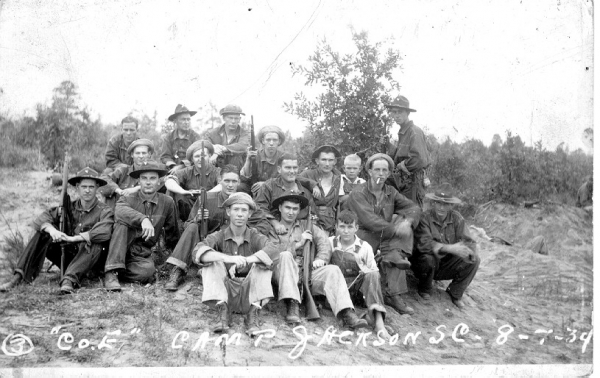
At the conclusion of World War I, Camp Jackson was shut down and the Camp was abandoned 25 April 1922 pursuant to General Orders No. 33, War Department, 27 July 1921.
Control of the camp reverted to the Cantonment Lands Commission in 1925, and until 1939 Camp Jackson was controlled by the state of South Carolina as an encampment area for National Guard troops. The camp once again came under Federal control in 1939 when it was organized as an infantry training center.
World War II
The Army reactivated Camp Jackson in Sept 1939 after Germany invaded Poland. More than 500,000 men who served in World War II received some phase of their training at Fort Jackson
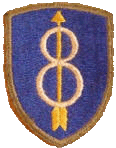 In July, 1940, the 8th “Pathfinder” Division was reactivated at Camp Jackson. The mission of the division was to train enlistees and selectees to be skilled soldiers to serve as replacements in a combat unit. Camp Jackson expanded to approximately 53,000 acres. The original Columbia Cantonment Commission lands were re-donated to the War Department for the cost of improvements made by the American Legion, Boy Scouts, Girl Scouts, YMCA, YWCA, National Youth Administration and other agencies.
In July, 1940, the 8th “Pathfinder” Division was reactivated at Camp Jackson. The mission of the division was to train enlistees and selectees to be skilled soldiers to serve as replacements in a combat unit. Camp Jackson expanded to approximately 53,000 acres. The original Columbia Cantonment Commission lands were re-donated to the War Department for the cost of improvements made by the American Legion, Boy Scouts, Girl Scouts, YMCA, YWCA, National Youth Administration and other agencies.
In August Camp Jackson reverted to Federal control and General Order #7 changed the status of Camp Jackson to Fort Jackson, and the post became the site for one of the largest construction projects ever undertaken in the Southeast. Between July 1940 and July 1941, over $18,000,000 of construction added more than:
- 3,000 buildings;
- 100 miles of hard-surfaced roads and streets;
- A hospital one mile in length with 2,200 beds;
- A communications complex with a 700-phone switchboard that concentrated all telephone, telegraph, radio and message centers together;
- 17 chapels;
- A 6,000,000 gallon-a-day water plant;
- A 187-acre lake;
- A post laundry capable of doing the washing of 30,000 soldiers weekly;
- A cold storage plant for the perishable food of 42,000+ soldiers stationed here by that time;
- A new target range, which would provide more than 1,100 targets for the firing of all known modern weapons;
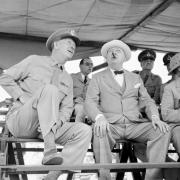
This construction project employed 7,000-8,000 civilians. These workers erected tent frames at the rate of one every 90 minutes. By the end of construction, Fort Jackson was the sixth largest Army post in the United States and South Carolina’s third largest city, surpassed in population only by Charleston and Columbia.
Eight Army divisions trained here during WWII: the 4th, 6th, 26th, 30th, 77th, 87th, 100th, and 106th divisions
June 1942 Prime Minister Winston Churchill witnessed a review at Fort Jackson. During his stay at Fort Jackson Mr. Churchill, cigar in mouth, trooped all over Fort Jackson to inspect every phase of training.
Post War
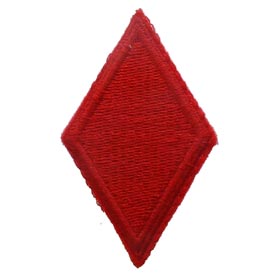 In 1946 Fort Jackson became a Replacement Training Center and in 1947 the 5th Infantry Division was reactivated here as a training division. In 1950 Fort Jackson was named as one of the installations to be closed in an effort to cut the defense budget
In 1946 Fort Jackson became a Replacement Training Center and in 1947 the 5th Infantry Division was reactivated here as a training division. In 1950 Fort Jackson was named as one of the installations to be closed in an effort to cut the defense budget
Korean War Era
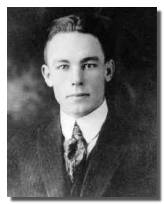
The Korean War halted the closure. On June 25, 1950 The Korean War began, and Ft Jackson was taken off of stand-by status. Later that summer the 8th Infantry Division was reactivated here as a training division.
Fort Jackson continued as a training center for new soldiers and mobilized National Guardsmen. A rapid influx of black and white draftees in 1950 contributed to it becoming one of the first Army installations to undergo large-scale desegregation.
The 31st Infantry Division and the 101st Airborne Division also served here.
In November 1953 Hilton Field was established in honor of Sgt. Richmond H. Hilton, a South Carolina native who was awarded the Medal of Honor for heroism displayed during WWI.
On March 16, 1956 Fort Jackson officially became the U.S. Army Training Center, Infantry, and the fort was restored to permanent status.
Vietnam War Era
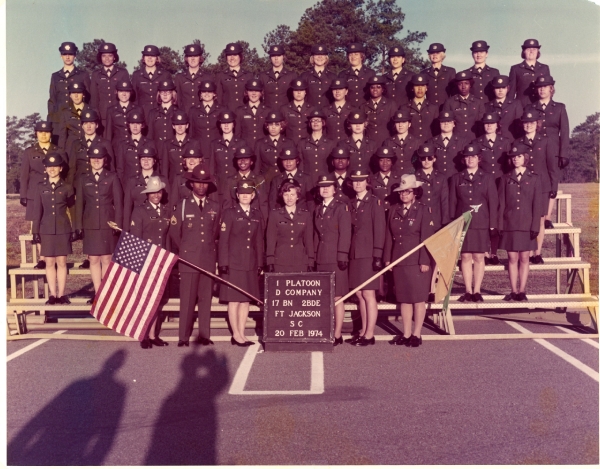
Throughout the 1960s and 70s, Fort Jackson continued its mission of conducting basic training, and in 1963 the Cuban Volunteer Training Program here trained 2,700 Cubans at Fort Jackson.
Fort Jackson had grown over the years, but most of the buildings were temporary. Finally in 1964, construction began on permanent steel and concrete buildings to replace wooden barracks, which had housed the fort’s troops since the early 1940s. In recognition of the fort’s 50th anniversary in 1967, the citizens of Columbia gave Fort Jackson the statue of Andrew Jackson that stands at Gate 1.
Unusually close civilian-military ties were cemented in 1968 when the city of Columbia annexed the post. Soldiers receiving training during the 1960s included Cuban expatriates and thousands of young men who went to Vietnam. The post also attracted international publicity during the 1967 court-martial of Captain Howard Levy, an antiwar Army doctor.
With the establishment of the modern volunteer Army in 1970 and the need to promote the attractiveness of service life, construction peaked in an effort to modernize facilities and improve services.
< /br>
End of the 20th Century
In 1973 the 3rd Infantry Training Brigade was deactivated. This ended an era of advanced infantry skill training for enlisted soldiers here. However, Fort Jackson was designated as the United States Army Training Center, where young recruits were taught to be soldiers.
In May, 1976 soldiers began to wear a new distinctive insignia designed exclusively for Fort Jackson soldiers. The insignia displays a replica of the General Andrew Jackson 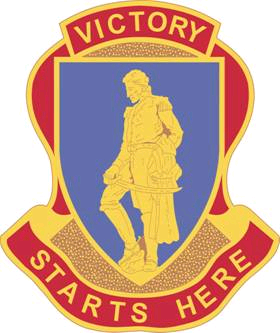 statue and is inscribed "Victory Starts Here." Fort Jackson was the first training installation to get its own insignia.
statue and is inscribed "Victory Starts Here." Fort Jackson was the first training installation to get its own insignia.
In 1987 Ft Jackson sold 290 acres for the construction of I-77.
In 1994 basic combat training units implement full-scale gender integration to the squad level. Also in 1994, the film “Renaissance Man,” starring Danny DeVito and Mark Wahlberg, was filmed here.
In 1995 the United States Army Chaplain Center and School opened here and the Soldier Support Institute was transferred here. The U.S. Army Soldier Support Institute at Fort Jackson is composed of the Adjutant General, Finance, Recruiting and Retention Schools, the NCO Academy, and the Army Element of the School of Music.
In 1999 The DoD Polygraph Institute moved here from Fort McClellan, Alabama.
21st Century
In 2007 the training brigades at Fort Jackson were redesignated as units with richer military heritage. Victory Brigade, formed in 1991, became the 171st Infantry Brigade. The 1st Combat Training Brigade became the 193rd Infantry Brigade, and the 4th Combat Training Brigade became the 165th Infantry Brigade.
Also, new shoulder sleeve insignia (SSI) for Fort Jackson was approved by the Department of the Army. The insignia, featuring a torch, crossed rifles, and a Victory V, replaced the blue, yellow, and red U.S. Army Training and Doctrine Command (TRADOC) shoulder sleeve insignia worn by permanent party Soldiers at Fort Jackson.
On November 5, 2007 President George W. Bush visited Fort Jackson where he observed training, attended graduation and spent private time with area Gold Star families.
In 2008, the Fort Jackson National cemetery was constructed.
 2007-2017 In an effort to improve the living conditions of Soldiers and the Fort Jackson community, Fort Jackson experienced a building boom. As part of the Barracks Upgrade Program, barracks at Fort Jackson received a facelift, including renovations in early 2007 on the rolling pin barracks on Magruder Avenue. Between 2007 and 2016, the 6 starship barracks were renovated, and 2 star base barracks were constructed to house basic combat training regiments. The Armed Forces Chaplaincy School was completed in 2010, the Fort Jackson Inn was constructed in Fall 2010, the new consolidated Drill Sergeant School was completed in Feb 2011, and renovations to Hilton Field were completed in April 2013.
2007-2017 In an effort to improve the living conditions of Soldiers and the Fort Jackson community, Fort Jackson experienced a building boom. As part of the Barracks Upgrade Program, barracks at Fort Jackson received a facelift, including renovations in early 2007 on the rolling pin barracks on Magruder Avenue. Between 2007 and 2016, the 6 starship barracks were renovated, and 2 star base barracks were constructed to house basic combat training regiments. The Armed Forces Chaplaincy School was completed in 2010, the Fort Jackson Inn was constructed in Fall 2010, the new consolidated Drill Sergeant School was completed in Feb 2011, and renovations to Hilton Field were completed in April 2013.
January 27, 2011 First Lady Michelle Obama toured Fort Jackson to learn from Army leaders about how childhood obesity and physical inactivity affects military readiness and what the Army does to combat these effects.
February 23, 2011 U.S. Army Drill Sergeant School opened.
On base, visitors are more than welcome to visit the U.S. Army Basic Combat Training Museum, previously known as Fort Jackson Museum when opened in 1974. The museum helps visitors to learn the history of Fort Jackson since created in 1917.

